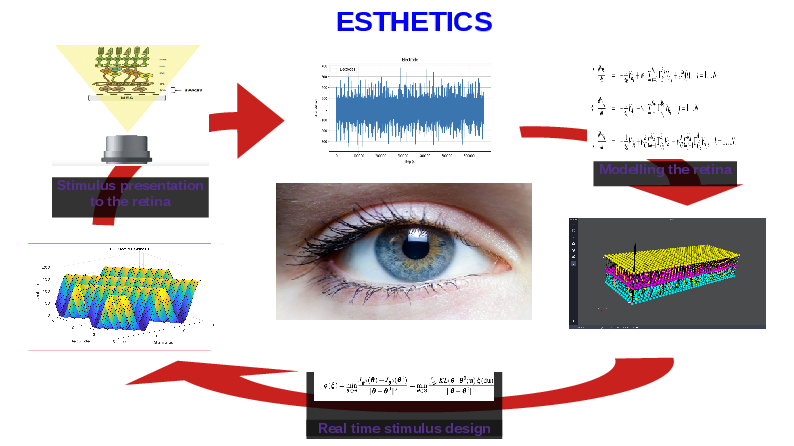Project ESTHETICS
 Exploring the functional structure of the retIna with closed loop stimulation. A physiological and computational approach.
Exploring the functional structure of the retIna with closed loop stimulation. A physiological and computational approach.
About the Project
This project aims to better understand the retina’s response to complex visual stimuli and unravel the role played by the lateral inter-neurons network (amacrine cells) in this response.
For this, we will adopt an experimental methodology using real-time control and feedback loop to adapt, in real-time, visual stimulations to recorded retinal cell responses.
The experiments will be done in Valparaiso (Chile). The Biovision team will develop the control software and extrapolate results at Inria Sophia-Antipolis based on its recent theoretical advances in retina modelling. This is, therefore, a transdisciplinary and international project at the interface between biology, computer sciences and mathematical neurosciences.
Beyond a better understanding of its network structure’s role in shaping the retina’s response to complex spatiotemporal stimuli, this project could potentially impact methods for diagnosing neurodegenerative diseases like Alzheimer’s.
- Principal Investigator
-
- Bruno Cessac, Inria Biovision
- Project's partner
-
- Adrian Palacios, Valparaiso University, Center of Neuroscience, Valparaiso, Chili
- Duration
-
- June 2023 - December 2024
- Total Amount
-
- 18 000 euros
- Project presentation
-
- Presentation of the project ESTHETICS at the RISE Academy Research Forum on 19th November 2024
- Publications
-
1. The early visual system from a dynamical system perspective: Tutorial Bruno Cessac Doctoral. Valparaiso (Chile), Chile. 2025
2. The early visual system from a dynamical system perspective: Main course Bruno Cessac Presentation at the Latin Americal Summer School in Computational Neuroscience (LACONEU), Valparaiso, Chile, Jan 2025, Valparaiso (Chile), Chile
3. How does lateral inhibition shape the response to moving stimuli ? Bruno Cessac Latin Americal Summer School in Computational Neuroscience (LACONEU), Valparaiso, Chile, Jan 2025, Valparaiso (Chile), Chile
4. « Closed loop strategy to characterize the retinal network: preliminary steps », B. Cessac, S. Ebert, M.J. Escobar, F. Miqueles, A. Palacios, E. Petit, J. Portal-Diaz, Inria research report. In progress.
5. « Parameters estimation in a retinal network model », B. Cessac, L. Pronzato, L. Sacchelli. In progress.
6. « On the retinal response to a moving bar », B. Cessac, S. Ebert, L. Piovano, In progress.
7. « Temporal refinement of spatiotemporal pattern prediction via short-term plasticity », B. Cessac, S. Ebert, L. Piovano, In progress.
- Leveraged projects
- Associated team: Inria FUSION https://team.inria.fr/biovision/fusion-functional-structure-of-the-retina-a-physiological-and-computational-approach/
